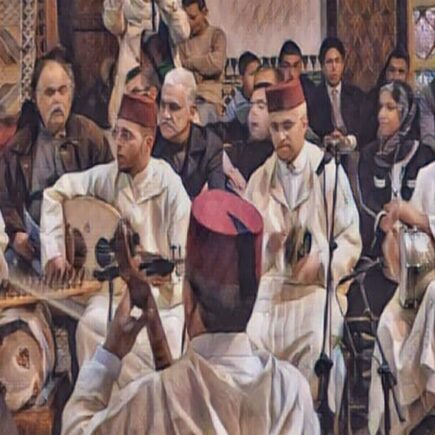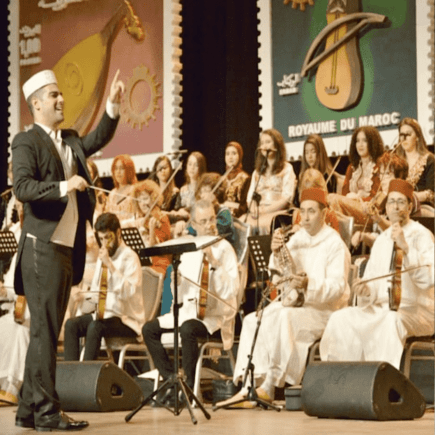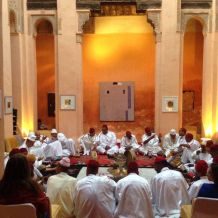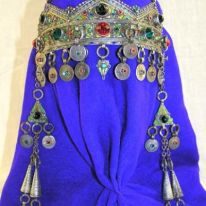
Legacy of Sephardic Music in Morocco
The Jews of Morocco left a legacy of traditional ballads of courtly love, lullabies and biblical songs sung in medieval Spanish when they emigrated to Israel. The combinations of these melodies are what musicians and music appreciators refer to as Sephardic music.
Influences and Fusion in Sephardic Music
Sephardic Jewish music encompasses a rich blend of influences from various cultures, including Spanish, Turkish, and Arabic. The music often features intricate melodies and rhythms that reflect the diverse heritage of Sephardic Jews. This unique fusion of musical styles creates a captivating and vibrant sound that has been passed down through generations, preserving the cultural identity of Sephardic communities around the world.
Historical Context: The Reconquista and Sephardic Songs
According to an article published in the New York Times, Saving Historic Songs and a Jewish Culture in Morocco, “Songs known as romances” are a heritage of the Reconquista, or Reconquest, when Christians in medieval Spain waged a centuries-long battle against Muslim occupation. While it is uncertain what Jews were singing in Iberia, it is certain that within Jewish culture, music has always played an important part of everyday life. Unfortunately, there are no available records of the music Jews played or who sang the songs. As a result, historians and musicologists are unable to trace the exact history and origins of Sephardic music. Thus, Sephardic music has always been an oral tradition.
Evolution and Dispersal of Sephardic Music

What makes Sephardic music interesting is the same element that makes it so complicated. The Jewish Sephardic musical traditions were carried with the Jews as migrated throughout the world and musical experts still argue whether or not Sephardic music is as representative of its Jewish roots as some believe. There are three schools of thought:
#1 A highly common argument is that while Iberian Jews moved to new lands, Sephardic music also assimilated and was affected by its new environment. Following their expulsion in Spain, Iberian Jews planted themselves in the Ottoman Empire, Italy, France, England, Germany and what was then considered the Low Countries. In the seventeenth century, some Jews moved to English and Dutch colonies in the Caribbean, India, South America and later, the United States and Canada. With each relocation, their music absorbed aspects of the music of their new home.
#2 Another concept is that due its multi-layered international influence, Sephardic music played today bears no resemblance to the music of the Sephardic Jews before they left Iberia. One problem is that even before the expulsion of the Jews in 1492, Spain was invaded by varying cultures from Europe, North Africa, and the Middle East. Since the Jews were not concentrated in one area of Spain, it is difficult to commit to a single point of origin.
#3 The most optimistic argument of all is that even though Jewish people traveled and migrated throughout the world over the past centuries, Sephardic music preserved Jewish culture and is representative of its original environment because of its preservation of the poetic and musical traditions of the romance. Also, popular lyric songs of Sephardic music are based on 19th century Spanish compositions; others are versions of the old narrative ballads, life and calendar cycle songs, or local compositions based on events or situations.
Sephardic lyrics incorporate several languages because at the time of the expulsions, there was not a single language known as Spanish. As a result, Castilian was emerging as a popular language, and Catalan, Galician, varieties of Andalusian, Romance, Asturo-Leonese, and other languages were commonly spoken in areas where Jews lived. Also, although it is uncertain to what extent Jews used Hebrew in their daily life, Hebrew is also heard in Sephardic lyrics. Ladino, an analgam of Castilian and Hebrew is a verbatim translation of Hebrew and is commonly found in Sephardic music.
According to an article published in the New York Times, Saving Historic Songs and a Jewish Culture in Morocco, “Songs known as romances” are a heritage of the Reconquista, or Reconquest, when Christians in medieval Spain waged a centuries-long battle against Muslim occupation. As the Reconquista was nearing its end in 1492, Jews who refused to convert to Christianity were expelled. Many of them ended up in Morocco, bringing their Spanish heritage with them.”
Although many countries in the world can claim some fame to the development of Sephardic music, Judeo-Spanish singing is best divided between two main regions: Morocco and the former Ottoman lands, with several subdivisions, especially Greece.
In both Morocco and the ex-Ottoman areas, the music of the songs has been strongly influenced by the music of the local cultures. Greek popular songs, Turkish rhythmic patterns and light classical Turkish melodies, Moroccan rhythms, entire songs translated into Judeo-Spanish, and popular melodies from the early 20th century, including tangos and the Charleston, have all played an important part in the development of what is now Judeo-Spanish song.
Contemporary Perspectives and Revival of Sephardic Music
Currently, there are many musicians in Israel, Spain and North America who are researching Sephardic songs and developing new music from them. Sephardic music has been exposed and influenced by so many cultures therefore new artists are experimenting with and performing Sephardic music more often than Sephardic Judeo-Spanish artists.
For more information about Sephardic Music and a Tour of Morocco’s Jewish Heritage





